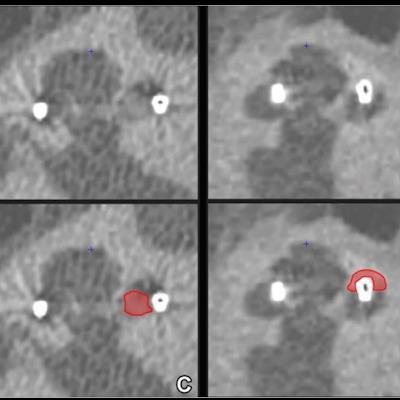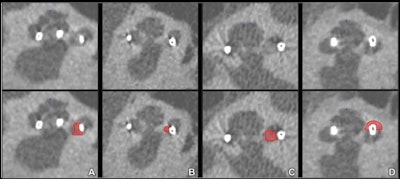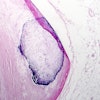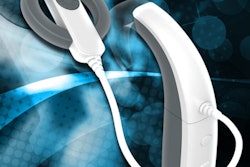
Researchers have found that a relatively new CT technique -- ultrahigh-spatial-resolution CT -- can reveal the negative effects of new bone formation around cochlear implants, including long-term residual hearing loss, according to a study published December 7 in Radiology.
The findings confirm the viability of this particular CT technique for auditing the status of cochlear implants, wrote a team led by Dr. Floris Heutink of Radboud University Medical Center in Nijmegen, the Netherlands.
"Our study showed that in vivo detection of new bone formation after cochlear implant placement is feasible with ultrahigh spatial resolution (UHSR) CT," the group wrote.
Cochlear implants consist of an external piece placed behind the ear and a surgically implanted component that stimulates nerves in the cochlea. The implants aren't a cure -- they don't restore normal hearing -- but they can improve the ability of patients to understand speech.
Complications from the implants are relatively rare, but they do occur. The formation of new bone around a cochlear implant electrode as an inflammatory response from the body can make device fitting tricky and result in poorer overall hearing outcomes, the team noted. Bone formation around the implant can also complicate reimplantation surgery and gene therapy to restore cochlear function.
Tracking the effect of new bone formation on cochlear implants has been difficult, but UHSR CT shows promise for this task due to smaller detectors (0.25 mm) that double the in-plane resolution of multidetector CT systems; smaller spot size (0.4 mm-0.5 mm); and larger matrix (up to 2,048 by 2,048). With these technological benefits in mind, the investigators used UHSR CT to evaluate new bone formation in 123 individuals with cochlear implants.
 Midmodiolar ultrahigh-spatial-resolution CT scans with corresponding annotations indicating new bone formation (NBF) in red. Note the varying appearance of NBF, ranging from (A) slightly increased attenuation, resembling that of the modiolus, to (D) frank ossification with an attenuation similar to that of the otic capsule surrounding a translocated contact in the scala vestibuli. An intermediate form of NBF appearance is shown in B and C. Moreover, in B, the ossification between the perimodiolar positioned electrode contact and the medial cochlear wall is difficult to discern, resulting in interrater disagreement. Images and caption courtesy of the RSNA.
Midmodiolar ultrahigh-spatial-resolution CT scans with corresponding annotations indicating new bone formation (NBF) in red. Note the varying appearance of NBF, ranging from (A) slightly increased attenuation, resembling that of the modiolus, to (D) frank ossification with an attenuation similar to that of the otic capsule surrounding a translocated contact in the scala vestibuli. An intermediate form of NBF appearance is shown in B and C. Moreover, in B, the ossification between the perimodiolar positioned electrode contact and the medial cochlear wall is difficult to discern, resulting in interrater disagreement. Images and caption courtesy of the RSNA.The team found that 68% of patients had new bone formation around the implants, primarily at the base of the cochlea, and that long-term residual hearing loss occurred more frequently in those who had developed this new bone (p = 0.04).
"[Our] results indicate that in vivo detection of new bone formation using ultrahigh-spatial-resolution CT is possible, and that the majority of cochlear implant recipients are likely to develop new bone formation after cochlear implantation," it wrote.
More research is needed on the use of UHSR CT for this application, Heutink said in a statement released by the RSNA.
"This technique will be a valuable tool to gain insight into occurrence, time course and the pathophysiology of this process and maybe used to evaluate still-to-be-developed treatments against new bone formation," he said.





















